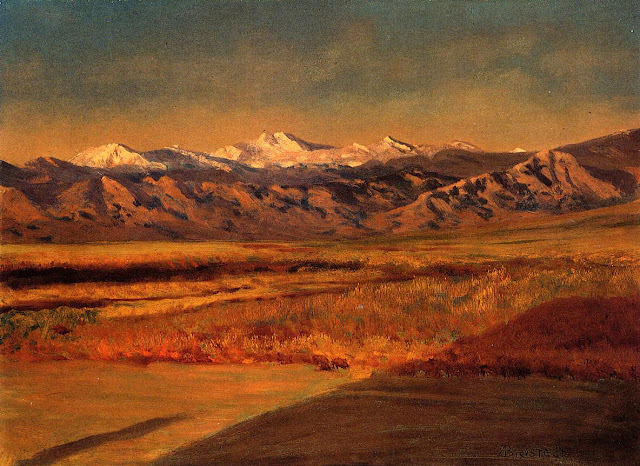Albert Bierstadt //American /born 1830- died 1902
Recognized as the foremost painter of the American frontier during the nineteenth-century, Albert Bierstadt was born in Solingen, Germany, in 1830. At the age of two, he and his family emigrated to the United States, settling in New Bedford, Massachusetts. Nothing is known of his early art training; however, he might possibly have been influenced by local landscape painters anddaguerreotypists. By the time he was twenty, he was supporting himself by teaching "monochromatic" painting and his work was beginning to attract the attention of New Bedford collectors.
In 1853, Bierstadt traveled to Düsseldorf in order to broaden his art education. It was there that heassociated with such American artists as Worthington Whittredge and Carl Wimar, all of whom frequently gathered in the studio of the German-American history painter, Emanuel Leutze. During this period, he was introduced to the work of Carl Friedrich Lessing and Andreas Aachenbach, contemporary German painters widely admired for their heroic, highly finished landscape compositions. Bierstadt quickly absorbed these stylistic conventions, eventually becoming the leading American representative of the Düsseldorf style.
While abroad, Bierstadt traveled along the Rhine, in the Alps and in Italy, often in the company of Whittredge, Sanford Gifford and William Stanley Haseltine. He returned to New Bedford in the autumn of 1857. In the following year, he made the first of his many contributions to the annual exhibitions of the National Academy of Design. In April of 1859, he joined the expedition along the Overland Trail, led by Colonel Frederick W. Lander, a trip that would soon give rise to the most productive and important phase of his career. Armed with sketches and stereographs, he returned to New York City in the autumn of 1859, establishing his studio in the Tenth Street Building. There he produced the first of the panoramic western landscapes that established his reputation on an international level and, during the mid-1860s, made him a rival of Frederick Church for the position of America's preeminent painter.



























































































Tidak ada komentar:
Posting Komentar